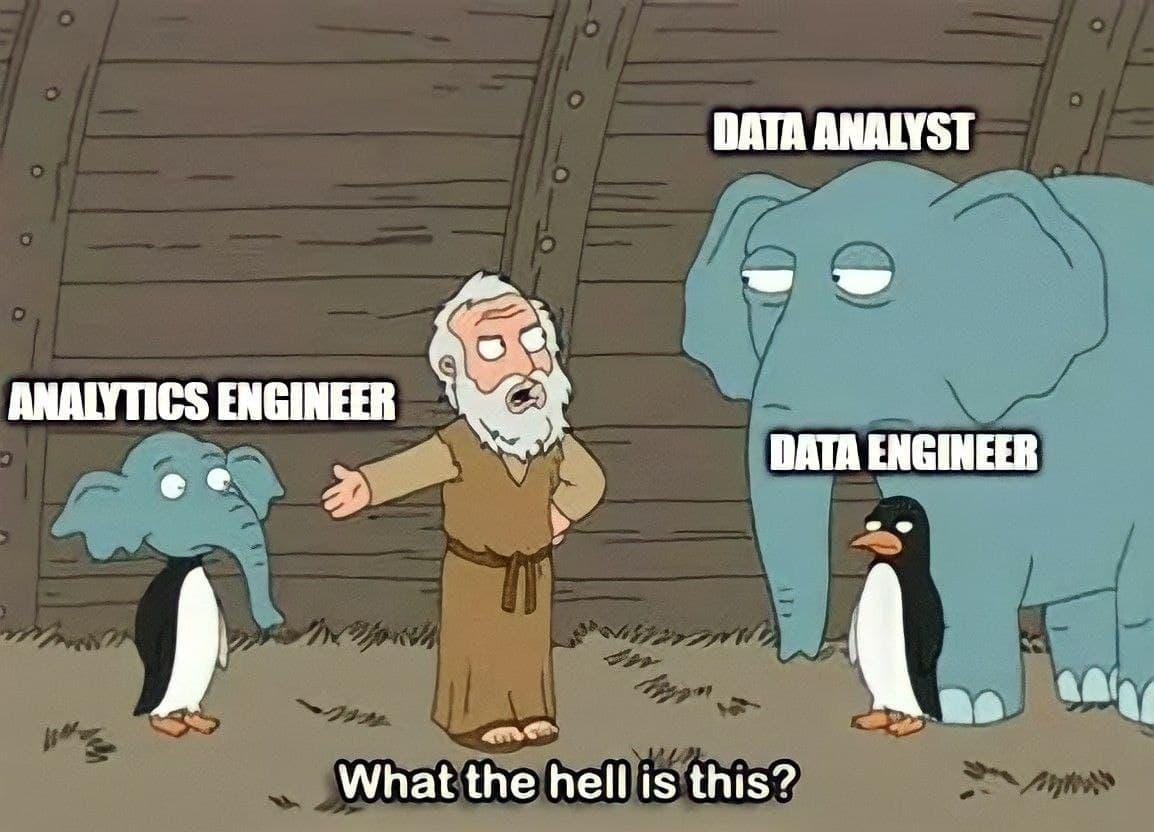Analytics Engineering 101

Over the past few years, the amount of data in the world has skyrocketed. More cloud platforms, more SaaS tools, more AI models and generative AI content, more data pipelines and a growing demand for teams that can turn this influx of data into something that businesses can use. And somewhere between the raw chaos of data engineering and the business-savvy world of data analysts, a new role emerged subtly, but powerfully: the Analytics Engineer.
If you've ever heard someone say "we just need clean, reliable data to make decisions", chances are, they were talking about the work of an analytics engineer, even if they didn't know it.
So... What Is Analytics Engineering?
Think of them as the translators between the data engineers (people who build the data systems) and the data analysts (people who need answers from the data). Their job? To take raw data and shape it into well-defined, easy-to-use models that drive dashboards, reports, experiments, and everything in between.
Yes, they write SQL and think like software engineers. They version control their code, write unit and integration tests, document everything, and build transformation logic that grows the business.
They live in that space where data pipelines meet business logic, and that's what makes them so valuable.
What Do They Actually Do?
They transform raw data into trusted datasets using tools like dbt (data build tool).
They design data models that is a reflection of how the business operates - customers, revenue, orders, retention, etc.
They monitor data quality, implement tests so data pipelines don't sneak bad data into the dashboards.
They make sure the data answers the questions people are asking by working closely with analysts and business stakeholders.
They collaborate with data engineers to understand upstream systems and make transformations efficient.
What Do They Use?
A typical analytics engineer's toolkit looks something like this:
- SQL - the bread and butter.
- dbt - the go-to framework for managing data transformations like code.
- Git - version control, collaboration and managing changes in dbt projects.
- Data warehouses - Snowflake, Databricks, BigQuery, etc.
- CI/CD pipelines - automated testing and deployments
- Documentation & lineage tools - so teams know what's what.
You need not be an expert in everything to get started, but curiosity, attention to detail and good communication skills go a long way.
Why This Role Matters (A Lot)
Businesses today want reliable, trustworthy, reusable data that they can use to make decisions without second-guessing. Analytics Engineers are the ones that make this possible, by turning fragile, adhoc queries into scalable, tested, versioned models that the entire organisation can trust.
They reduce the time spent debugging dashboards.
They help teams speak the same language (ever argued over what "active user" means?).
They make sure data is useful and not just available.
Analytics Engineering is no longer a niche; it's becoming foundational to how modern data teams operate.
Want To Get Into Analytics Engineering?
Here's a high-level roadmap:
- Master SQL like it's water - this will become your main language.
- Get hands-on with dbt - there's literally no better tool currently to learn modeling, testing and transformations.
- Understand the business - data modeling isn't just technical; it's deeply tied to how the business works.
- Get comfortable with Git - this skill is non-negotiable on modern data teams.
- Practice writing clean, modular code - best analytics engineers treat SQL like software.
You might not have a computer science background. You might be an analyst who loves systems thinking. Or a data engineer who enjoys building pipelines. Or just someone who enjoys solving real problems with clean logic and reusable structures. If any of the above is true, you are worthy of becoming an analytics engineer.
Analytics engineering is still evolving, titles vary, responsibilities shift, and tooling is growing fast. But the core idea stays the same:
Build data models that the business can trust, and do it in a scalable, testable, well-documented way.
If that excites you, you're in the right place. Because this is only the beginning.


Discussion